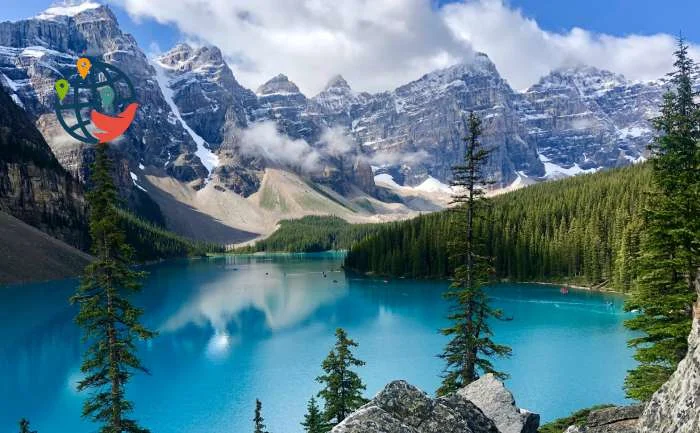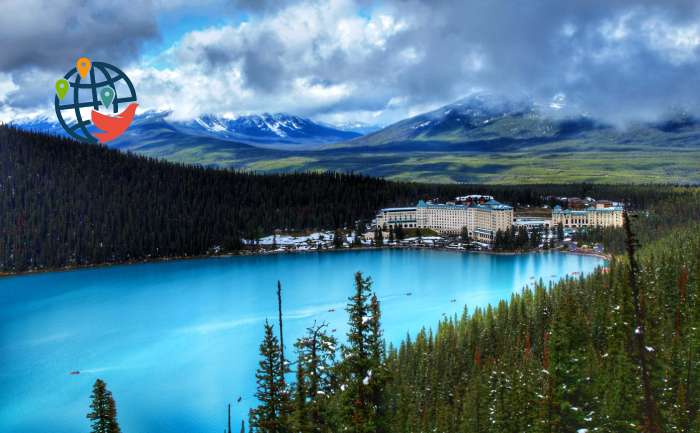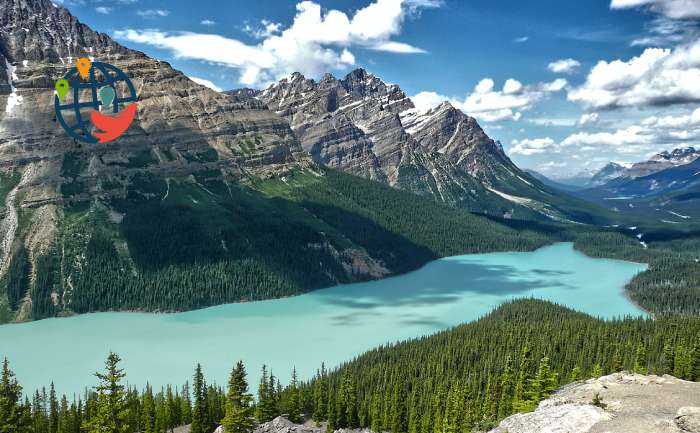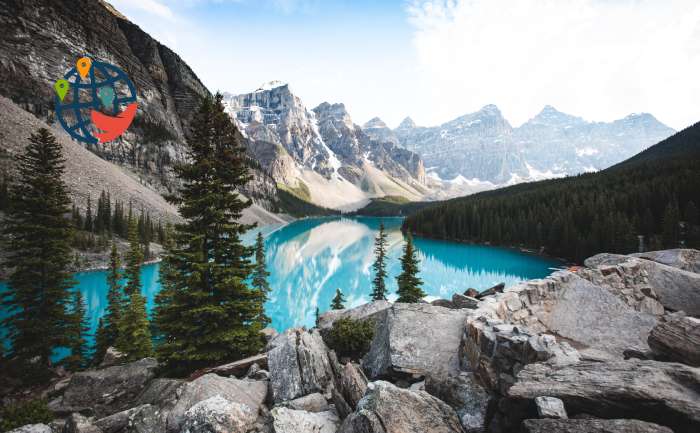The Magic of Alberta Lakes

Your eyes will enjoy it!
Canada is famous for its stunning nature and magical landscapes. The breathtaking views captured in photographs and documentaries have caused thousands of people to consider moving to a distant, yet so appealing land.
Canada's famous lakes, of which there are about 879,800, according to McGill University, are due in no small part to this. Canada is called the Land of Lakes for a reason!
Alberta without a doubt ranks first among all the provinces for the most photogenic, "Instagrammable" reservoirs of water, and we want to tell you about the six most famous and most interesting of them.
1. Lake Waterton
Waterton is where the rolling prairies of Alberta meet the stunning Rocky Mountains. The landscape is filled with diverse wildlife, dozens of different wildflowers, and some of the best hiking trails in North America. Waterton Lakes National Park is a favorite destination for those Canadians looking for adventure, activity or relaxation at any time of year.
The upper part of the main lake is in Waterton Lakes National Park and the lower part is in Glacier National Park.
It is unique in its diversity, which is why UNESCO registered the Waterton Biosphere Reserve in 1979 to protect ecosystems including prairie meadows, aspen forests, subalpine forests, alpine tundra and freshwater marshes surrounding the lake.
Waterton-Glacier International Peace Park was created by the United States and Canada in 1932, and in 1976 it was designated an International Biosphere Reserve. Later, in 1995, it was listed as a UNESCO World Heritage Site.
2. Lake Louise

Canada's most famous and most visited lake, famous for its vivid color. It was formed when a dam of glacial debris caused glacial meltwater to drain away, creating a spectacular turquoise lake that is known and loved the world over. The beautiful Bow River flows into it, and most of the water comes from the huge Victoria Glacier in the mountains above the lake. The glaciers scratch the limestone rocks, releasing minerals that are carried into the lakes by rivers. As the water supply to the lake changes, the color of the water also changes: it can be bright blue, but also coal-black.
Lake Louise was originally called Ho-run-num-nay, which roughly translates as "Little Fish Lake. It was discovered in 1882 during the construction of the railroad. Builder Tom Wilson heard some noise in the distance. Local Indians told him that White Mountain was making noise over a lake with small fish. Wilson decided to find out what it was all about and he was right — he got one of the most picturesque views in the world.
A little later, in 1885, the first national park was created Banff, and the lake was within its borders, popularly called Emerald.
The lake quickly gained a reputation as a popular tourist destination, leading to the construction of Chateau Lake Louise in 1886. The modest two-bedroom log cabin offered adventurers a chance to escape the industrial world and return to nature.
The original Chateau Lake Louise burned down in 1893, allowing the owners to expand it and change its location. The popularity of the Chateau and the lake as a tourist destination led to its renaming from Emerald to Lake Louise in 1914, in honor of Princess Louise, daughter of Queen Victoria and wife of the Governor General of Canada.
It is now a pilgrimage destination for budget hikers and sophisticated travelers alike, offering hiking, horseback riding, dog sledding, canoeing, and ice fishing. Right on the shore of the lake is the chic five-star Fairmont Chateau Hotel.
3.Pyramid Lake
With a total area of 1.2 square kilometers, it connects to the Athabasca River via Pyramid Creek, 2 kilometers long. The lake's waters are some of the calmest and warmest in Canada, so it is ideal for kayakers, paddlers and relaxed boating. The place is also incredibly popular with fishermen. It sits at the foot of the mountain of the same name, which is clearly reflected in its peaceful glen. Carved by glaciers, Pyramid Mountain is mostly composed of quartzite and iron pyrite (and it's that fool's gold), which gives the mountain charming red and coral hues.
One of the perks of Pyramid Lake is its location, just 5 km from the city on Pyramid Lake Road in Jasper. You can get there by car, bike, or just walk: Pyramid Lake is well connected to the city by several bike and jogging paths.
Travelers are urged to visit the island, which is connected to the mainland by a photogenic bridge, couples in love rent gazebos for weddings, and the island also has a wooden shelter built in 1933 during the Great Depression and recognized as a federal heritage building.
4.Lake Peyto

At the end of 2021, the world's most beautiful natural wonders were rated, and Lake Peyto took first place. It is located in the Banff National Park at an altitude of 1,860 meters. It was named after the explorer and traveler Bill Peyto, who first discovered this natural wonder. The lake owes its popularity to its strange shape (it resembles the head of a huge wolf), as well as to the unusual color of the tropical ocean. The reason is that the glaciers that feed Peyto carry mountain glacial flour, which turns the water into a thick turquoise, as if diluted with milk.
If you want to admire the beautiful view of the lake, try the 2.4 kilometer hike. It is an easy hike that will give you a view you will never forget.
5. Small Slave Lake
Little Slave Lake is a three-hour drive from Edmonton and is great for a weekend getaway. A popular spot on the lake is Marten River Provincial Park. Here travelers will find clear, cool water and one of the best beaches in northern Alberta. Fishermen know these places well: pike, burbot, whitefish and northern pike are found here.
Next to the lake are hiking trails through the pine forest.
The highlight of a visit to Little Slave Lake is the Boreal Bird Conservation Center. This 500-square-metre facility is dedicated to the study of the birds that call the boreal forests their home. Inside you will find fascinating exhibits that provide insight into Canada's environment
6. Moraine Lake in the Valley of the Ten Peaks

This is a glacier-fed lake in Banff National Park, 14 kilometers from the village of Lake Louise. It is located in the Valley of the Ten Peaks (here they are, Canada's most Instagrammable mountains!) at an elevation of about 1,884 meters. The lake has a surface area of 50 hectares.
Like Louise, it is famous for its stunning turquoise color, which appears due to the refraction of light from minerals hitting the bottom.
Walter Wilcox was a Yale College student whose passion was the wild beauty of the Rocky Mountains when he was hired by explorer Tom Wilson to help map the area around Lake Louise. Wilcox set out in August 1899 to find a new route up Mount Temple. For two days he endured rain and snow, but on the third day the skies cleared. Encouraged by the sunshine, Wilcox climbed up the valley to the top of a pile of rocks. There he discovered a beautiful sight-a narrow, secluded valley with a small lake surrounded by wild rocky bluffs. Wilcox named it Moraine Lake, after the moraine, or pile of rocks deposited by the Wenchemna Glacier.
He later wrote that "no scene had ever produced the same impression of inspiring solitude and stark grandeur," adding that the time spent contemplating this view was the happiest half-hour of his life.
It is now a favorite destination for hikers: there are several trails around, and the most popular is the Rockpile. It is about 300 meters long and has a drop of 24 meters. One of the most photographed views in Canada, known as the "Twenty Dollar View," can be seen from the top of the cliff: Lake Moraine was depicted on the back of the Canadian $20 bill.
In early 2022, the surroundings of the lake was chosen as the best place to watch the sunrise in the country and is now, according to social media users, one of the hardest places in Canada to park. Crowds of nature lovers and beautiful views take up the entire parking lot in just a couple hundred spaces. The incredible demand is forcing people to arrive earlier and earlier — and now there are mishaps where the entire parking lot is occupied hours before sunrise.
Canada has nearly a million lakes and countless other wonders! Nature lovers can certainly make a busy program for a two-week vacation and try to fulfill it while moving from place to place, but wouldn't it be better to travel around the whole country as residents? Our licensed immigration counselor can help you execute this idea. Make an online appointment and take the first step toward your dream.





























